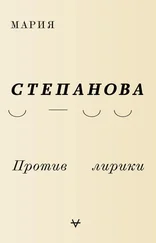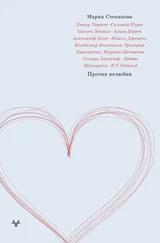I want to write about the singspiel itself, and its wondrous complexity, as if it weren’t connected with the fate of its maker — but it doesn’t seem possible. There’s something in the character of the work that makes us want to lay a filter over our reading to ease it, and then to throw the same filter aside in irritation. This is not autobiography, although it is incredibly similar. Neither is it an exercise in self-help therapy that we are witnessing, nor an effort to contain trauma (although Charlotte herself tells us more than once that the work is not an end but a means). It’s not even an anti-Nazi text — the Nazis in Life? Or Theater? are not more comic or frightening than any of the other protagonists. “I was each of them,” states the author.
This is not true either. Both named and unnamed are present in the work: the text about trauma, what one might term “female optics,” the sign of the Catastrophe, the magic of childish thought: if I draw it, that’s how it will come to be . All these readings are rational and justifiable in themselves; it’s the incongruity between the scale of the singspiel and its reception that hurts. It’s as if we rummaged through the archives of the male art world and found that the whole body of textual interpretation of Proust’s In Search of Lost Time was based on Proust’s biography: Proust and Jewishness, Proust and homosexuality, Proust and tuberculosis. This thing Charlotte Salomon invented and made is far more than its own reflections.
I keep wanting to discuss Salomon’s singspiel, with its carefully conceived theatrical frame, as if it were literature. I keep using the words “text,” “book,” and “read.” Perhaps this is because its drifting space has the contours of the classic nineteenth-century novel, the sort her grandparents might have read, the tradition continued by Proust, Mann, and Musil. But I’m wrong — as far as I know there are no references to literature or to writers in the work, although there are dozens of direct and indirect references to the musical and visual arts. Literature was invisible, but you could feel it in the air you breathed during adult conversations. Operetta is the younger sister of the Dombeys, the Karenins, and is occupied with the same immutable concerns: that thematic high road of “the disappearing world.” Charlotte Salomon serves up the institution of the bourgeois family; a torture chamber, with the caressing instruments of pressure and exclusion. Since the object of her observation is her own history, it is harder to see the shadowy model for her text: the nineteenth-century novel, where everything is both symptom and verdict.
She is fighting a world order, and what angers her most is that it’s doomed and yet won’t put up a fight: it would rather delude itself and clutch at straws. Sitting by the hospital bed of the dying century, she isn’t quite sure whether to love or hate it, save it or put it to death — and she makes the decision to disown it, curse it and give away its terrible secrets. You could compare Life? Or Theater? with the comics in vogue at the time, or today’s graphic novel, but neither would be exact comparisons: the images in comics and graphic novels are shaped both by their chronological sequencing, and by the borders between each frame. These borders chart a route through a selection of images, they help the reader negotiate that route and protect her from misunderstanding and loss of focus.
In Salomon’s work all the borders are removed and every sheet can be gazed at infinitely, like a figure eight or a Möbius strip, where everything happens simultaneously. The same character makes a series of movements, each hardly differing from the next, as if the author is hoping to preserve the most minute phases of that character’s movement for all eternity. We can only guess how much time passes between each phase. Perhaps minutes, or perhaps months — it could well be either. The coexistence of different layers of time in the singspiel makes it unique, perhaps resembling only the calcified time of the poem, which is temporally and rhythmically defined by the reader’s breath. What Charlotte depicts, the absolute past and its capsule of color, is a place so remote that everything happens simultaneously there, both recent and long past; the phrase begins again before you have finished saying it.
This place, this world, is very tightly packed; the people, both the familiar and the unnamed masses, swarm and multiply. Although the actual cast list is short, we have the sensation of being on a crowded station concourse or a beach at high season. Here the measure of time is very clearly shown: its repetitiveness, its monotony, its transparent sack filled with bodies, gestures and conversations. All this space is filled with intense and powerful color — red, blue, yellow, and all of their combinations. Griselda Pollock has produced very detailed work on the function of color in Salomon’s universe — every character is given not only a musical phrase but a color code:
blue for the mother; yellow for the diva, the golden voiced woman […] and red for the voluble, fantastic, imaginative, crazy prophet who preached how to live after having been, like Orpheus, through hell to death and back. Red tinged with yellow would also be the threat of death and madness.
But the power of the work resides in its ability to resist any interpretation, especially that of its own narrator, who quotes the theory of her hero as if it is holy scripture — the same hero who presses her against the wall in a dark corridor a few pages later with the words: “What a lovely neck you have, child. Let me kiss it. Won’t your mother be home soon?”
It does seem as if one of the main drivers of the drawn text and the “talking pictures” is the refusal to pass judgment. Every point of view is understood to come from outside the text, and no motivation or explanation is provided for anything; it is all treated with the same icy malice. If Charlotte really ascribed a magical function to her work, then she was not wrong to do so. She succeeded in locking the past away in a room, and we can still hear it restlessly pacing, and beating at the walls.
The German word “Erinnerung” (memory) has a distant echo in the Russian ear: the flight of the Erinyes (or Furies), those vengeful divinities who remembered and pursued the guilty to the corners of the earth, however they tried to remain hidden. The extent of memory, its ability to catch those who try to evade it, depends directly on whether we can turn and meet it head-on. This is exactly what the heroine of Life? Or Theater? does when she faces her decision: to take her life or to embark on something really quite mad. That is, to become everyone she ever knew, to speak with the voices of the living and the dead. At this point between her and the author there is no border.
Not-A-Chapter
The Stepanovs, 1980, 1982, 1983, 1985
1.
Addressed to my grandfather, Nikolai Stepanov, from his niece. The letter is undated, but appears to be from June 1980. My little round big-eyed grandmother Dora Zalmanovna Stepanova (maiden name: Akselrod) died in May 1980. She and my grandfather were the same age, both born in 1906. He outlived her by five years.
Galina is the daughter of Grandfather’s much-loved sister, Masha. She lived near her mother in the village of Ushakovo in Kalinin District. Up till then they had been used to corresponding frequently but that summer Grandfather broke off correspondence for a long while.
Dear Uncle Nikolai,
Your letter arrived. We found out about Auntie Dora from your letter to Mother. It was so unexpected. Just before that mother received a letter which seemed very hopeful — and then suddenly this. We were very upset, especially because the letter took a long time to reach us and it’s strange you chose to tell us by letter. We’re family after all. We’ve known Auntie Dora for so long and we would have liked to give her a Christian send-off. I can’t believe that Auntie Dora is gone. Although I haven’t seen her in a long while, I remember her clearly, looking after everyone, very caring. I wrote straightaway, Uncle Nikolai, but then I ripped up the letter. I’m not good at offering comfort. Words seem so pointless, so empty, at times like these. And just knowing that she is gone forever, for all time, kills me. I had my first close encounter with the word “death” in 1948. I knew that it was possible to die in the abstract, that people died of old age and in wars. But my own sister, eighteen years old, so close to me, so warmly alive, and suddenly not there — I couldn’t begin to come to terms with it, I ran out of the village to the scrubland and I wept and cried and scratched the earth and prayed to God that He would bring Lusya back to life. I never spoke her name aloud, but day and night it was all I could see. At night I mostly cried, but very, very quietly so no one could hear, and then worn out by weeping I would fall into a heavy sleep. I was a shy child anyway, but after this I withdrew even further into myself and perhaps no one except my father understood me, but we kept out of each other’s way and we carried our burdens alone. I was in torment, or perhaps I was scalded by a sense of shame — I don’t know how to describe the feeling — that she had died and not me. And more than once the terrifying and unchildlike thought of dying came to me, into my young head, but when I was ready to take the step I suddenly felt sorry for my parents. If we’d all mourned together, wept together, then perhaps it would have been easier. But we all withdrew and carried these hellish torments, the suppressed cries, the tears and the unhappiness in our souls. And then 1960, 1963, and 1966. Irreparable losses, beyond any comprehension. I can’t offer you any comfort, Uncle. I am only writing because I know the cost of such losses and I have no words of consolation, I am just mourning together with you, I understand your grief.
Читать дальше











